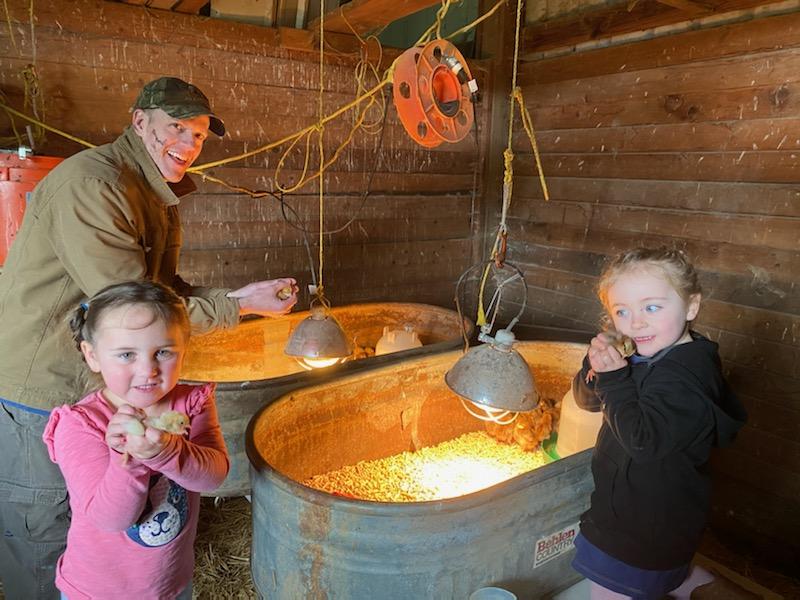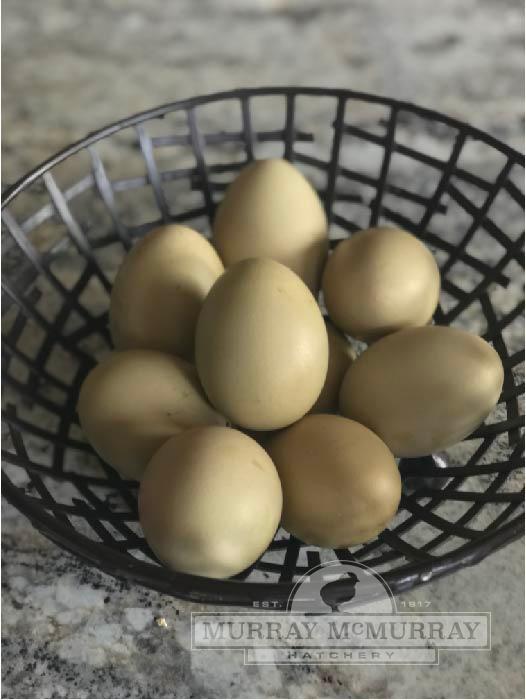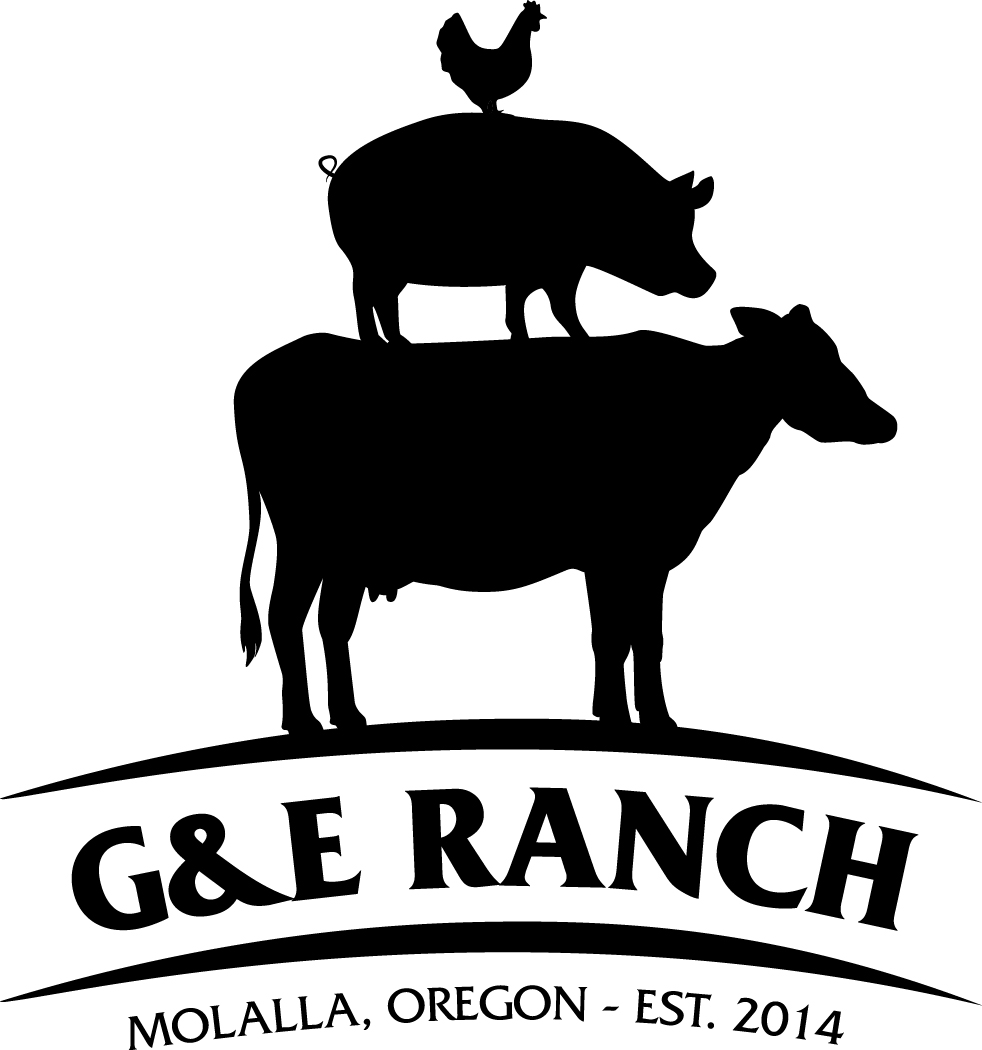Last Friday, we picked up 54 laying chicks from the post office. Yes, the post office. We had ordered them several months ago and knew they would be coming this week. On Tuesday, we got notified from Murray McMurray Hatchery that the birds were being shipped from Webster City Iowa and should arrive Thursday possibly Friday. On Thursday morning, Greg went to the local post office at 6 am when the delivery truck arrives to see if his birds were there. They said no, so off to work he went. Again, on Friday, he met the delivery truck at the post office at 6 am. The driver hadn’t quite unloaded the birds, but Greg didn’t need to wait long before he was off.

At this point, the birds were 3-4 days old. Typically, one or two birds do not make it through the 2-3 day journey across the country, so they always send an extra bird or two to compensate you. We were lucky this time and only lost one bird.
One fun thing the hatchery does is throw in a random bird. It could be male or female of any breed, so you will have no idea what it will turn out to be.

The birds will live in the barn for about 4.5 months due to their feed requirements. They start in troughs while they are very young. We place no more than about 25 chicks per trough with a heat lamp, feeder, and waterer. If too many chicks are placed in a trough, they bunch up too closely to the heat source and literally trample each other to death. We have learned this the hard way, and it’s devastating. (Greg didn’t have time one year, so he placed over 100 baby chickens and turkeys together on the floor of a horse stall covered in straw. He had one heat lamp, and this resulted in losing almost 50% of the chicks in a matter of about 2 days.) Once they outgrow their current homes in the troughs, they will transition to the ground. As they get older, their feed requirements change from chick mash to chick crumble to grower feed, to finisher feed to layer feed. In early July after they have completed their finisher feed, we will introduce them to the existing flock where layer feed is available. At this time, there will be a serious adjustment for the older chickens and younger chickens. They naturally don’t like to be together for the first few days, and some of the older chickens will show their dominance. In some rare cases, young chickens are killed.

The birds we purchased this year are Whiting True Green layer chicks, a change from Americana (Easter Egger) chicks that are popular for their blue-green eggs. We have found that chicks that produce tinted eggs simply don’t lay as many eggs as their competitive white and brown egg laying cousins. They have no problem eating just as much, but they are less productive, making their eggs too expensive. These new chicks lay a dark olive-green egg and are supposed to be more productive, so we are going to give them a try. We really like to add color to the farm eggs we sell.

These birds will start laying in late July. Below is more information on the bird.
The Whiting True Greens are excellent green egg layers. This relatively new breed is popular as hens lay consistent large, green eggs, have an astounding feed-to-egg conversion, are not likely to set, and free-range well.
Mature birds range from reddish to chestnut in color, have a single comb, yellow legs, and are on the light side — averaging around 4-7 pounds. Day-old baby chicks display a variety of colors from golden to chestnut to a darker reddish-brown.
The Whiting True Greens was developed by Dr. Tom Whiting, a poultry geneticist specializing in developing feathers for the fly-fishing industry.
Over the last few years, we have ordered all of our poultry chicks from Murray McMurray Hatchery. If you are interested in ordering yourself, go to their website HERE.

Trackbacks/Pingbacks